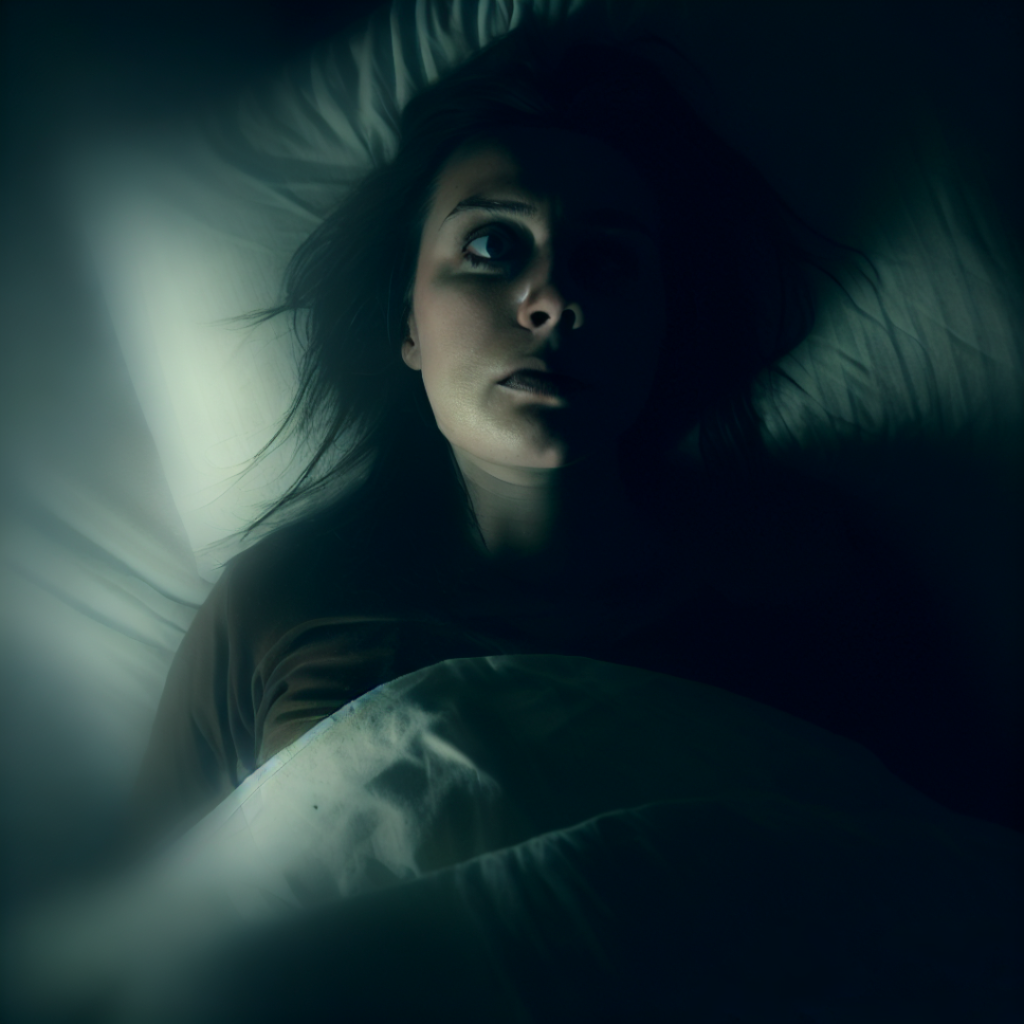Sleep paralysis is a perplexing and unnerving experience that affects many people around the world. This phenomenon occurs during the transition between sleep and wakefulness, leaving individuals temporarily immobilized and often accompanied by vivid hallucinations. In this article, we delve into what sleep paralysis (walking paralysis) is, explore the notion of sleep paralysis demons, and shed light on this enigmatic sleep disorder.
What is Sleep Paralysis?
Sleep paralysis occurs when the mind wakes up, but the body remains in a state of sleep-induced muscle atonia. During rapid eye movement (REM) sleep, the brain’s dream activity peaks, and the body typically enters a state of temporary paralysis to prevent us from physically acting out our dreams.
In walking paralysis, this paralysis continues even when the mind wakes up, causing a terrifying sensation of being unable to move or speak. The mind is conscious, but the body is still under the influence of sleep, leading to an alarming disconnect between the two.
The Hallucinatory Sleep Paralysis Demons
One of the most distressing aspects of sleep disorder is the presence of vivid and often malevolent hallucinations, commonly referred to as walking paralysis demons. These hallucinations can take on various forms, ranging from shadowy figures and grotesque monsters to otherworldly beings.
Individuals experiencing walking paralysis often report feeling a malevolent presence in the room, watching them and even attempting to harm them. These hallucinations can evoke intense fear and a sense of impending doom, amplifying the already distressing nature of sleep disorder.
The Science Behind Sleep Paralysis Demons
While sleep paralysis demons can seem all too real to those experiencing them, they are not supernatural entities but rather products of the brain’s imagination. The limbic system, responsible for processing emotions and fear responses, plays a significant role in creating these hallucinations.
During walking paralysis, the brain’s emotional centers remain active, while the regions responsible for logical thinking are still partially in a state of sleep-induced quiescence. This imbalance can lead the brain to interpret the lack of movement and sensory input as a threat, giving rise to the perception of sinister entities.
Cultural Influence on walking paralysis Demons
The depiction of walking paralysis demons is often influenced by cultural beliefs and local folklore. Across different cultures, accounts of similar experiences have been interpreted as encounters with supernatural beings or malevolent spirits.
In some cultures, walking paralysis is linked to stories of witches or demonic entities sitting on the chest of the sleeping individual, leading to the term “nightmare” (derived from “mare,” meaning demon). These cultural influences can shape the specific appearance and behavior of walking paralysis demons in individual experiences.
Coping with walking paralysis

Sleep Paralysis
For those who experience sleep disorder, it is crucial to recognize that the phenomenon, while terrifying, is not a sign of mental illness or supernatural intervention. Understanding the scientific basis of walking paralysis and the role of the brain in generating hallucinations can empower individuals to cope with the experience more effectively.
Maintaining a consistent sleep schedule, managing stress, and avoiding sleep deprivation are some practical steps to minimize the occurrence of walking paralysis. Moreover, seeking support from healthcare professionals can help individuals gain further insights and strategies to navigate these distressing episodes.
walking paralysis Demon. Is it Real?
The concept of a “sleep paralysis demon” is a widely discussed and feared aspect of sleep paralysis. When individuals experience walking paralysis, they often report hallucinations of malevolent entities or shadowy figures lurking in their surroundings. These hallucinations, often referred to as walking paralysis demons, can evoke intense fear, making the overall experience even more distressing.
However, it’s important to note that walking paralysis demons are not real entities or supernatural beings. They are purely products of the brain’s imagination during the walking paralysis episode. walking paralysis occurs when the mind is awake, but the body remains in a state of temporary paralysis, a normal mechanism that prevents us from physically acting out our dreams during rapid eye movement (REM) sleep.
During this state, the brain’s dream activity, which is normally confined to the REM stage, spills over into wakefulness. This causes vivid and sometimes terrifying hallucinations, including the perception of menacing figures or entities. The brain’s emotional centers, responsible for processing fear responses, remain active, while the regions responsible for logical thinking are partially asleep, leading to a skewed interpretation of the situation.
Factors Influencing Walking Paralysis
Various factors can influence the specific appearance and behavior of walking paralysis demons. Cultural beliefs and local folklore play a significant role in shaping how individuals interpret these hallucinations. Across different cultures, accounts of walking paralysis have been linked to stories of witches, demons, or other supernatural beings, contributing to the idea of walking paralysis demons.
It’s essential to remember that walking paralysis, including the hallucinations of sleep paralysis demons, is a relatively common sleep disorder and can happen to anyone. While the experience can be distressing and frightening, it is not an indication of mental illness or paranormal activity. Understanding the scientific basis of walking paralysis and its hallucinatory nature can help individuals cope with the phenomenon more effectively.
For those experiencing walking paralysis, seeking support from healthcare professionals can provide valuable insights and strategies for managing the condition. Maintaining good sleep hygiene, managing stress, and following a regular sleep schedule are also beneficial practices to minimize the occurrence of walking paralysis episodes and associated hallucinations.
Takeaway
Sleep paralysis is an enigmatic and unsettling phenomenon that affects many individuals worldwide. The hallucinatory aspect of walking paralysis, often portrayed as walking paralysis demons, adds an extra layer of terror to the experience. However, understanding the scientific basis of walking paralysis can provide comfort and reassurance to those grappling with this sleep disorder.
As we continue to unravel the mysteries of sleep and consciousness, addressing walking paralysiss and dispelling the myths surrounding it is essential. By shedding light on this peculiar phenomenon, we can provide support and guidance to those affected, helping them navigate the realm between sleep and wakefulness with greater confidence and peace of mind.




